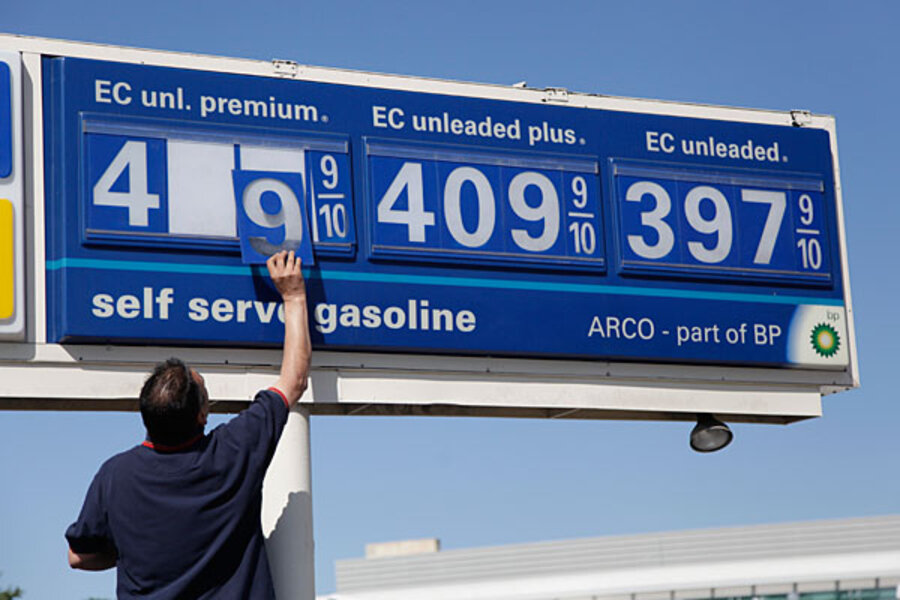California dreaming? Under $4-a-gallon gas could rev up state economy.
Loading...
| Los Angeles
The average price of a gallon of gas has fallen below the $4-mark in California thanks to a 12.7-cent drop from the previous week, the third double-digit decline in as many weeks, the AAA Fuel Gauge Report says.
According to the report, a gallon of gas in California cost $3.99 Monday, marking the first time since mid-February the state has seen a below-$4-per-gallon average.
It is a bright spot for many in a state that seems to be getting nothing but bad economic news recently.
“This is good news for consumers and good news for the state,” says H.D. Palmer, chief spokesman for the California State Department of Finance. “This means more money in the pockets of consumers, more money spent on clothing and other retail items, which means more sales taxes for the state.”
The lower gas prices also bring the state added revenue in other ways. California does not have sales tax on gasoline, but has an excise tax that is measured in the number of gallons sold, points out Mr. Palmer.
“This means that the more gas people buy because it’s cheaper, the more that excise tax will bring in,” he says. Of course, higher prices usually dampen the volume of purchases, he adds.
Palmer is quick to point out that any boon to state coffers generated by consumer spending won’t necessarily translate immediately into restored jobs for teachers or other public employees. “This will fill pocketbooks and gas tanks,” he says, but adds that how and where it will impact state expenditures is less direct.
For many consumers, however, the impact is immediate.
“Now I can breathe easy again,” says Carlos, of Carlos and Pepe Painting, as he fills his pickup truck with regular gas at $3.89 at the corner ARCO in Sherman Oaks. He says his business depends on jobs all over Southern California, and when gas prices climbed well over $4 for a month, he was having a hard time making ends meet.
“Yeah, we cut back on everything from food to movies,” he says, adding that his truck only gets about 18 miles per gallon. “All this driving was really socking it to my pocketbook.”
Most experts expect prices to trend downward through at least the third quarter of this year. According to this week’s petroleum report from the US Energy Information Administration, national prices were on average $3.57 a gallon this past week, and regular gasoline is now expected to average $3.51 per gallon nationally in the third quarter, down from the $3.76 per gallon forecast in May.
Some observers suggest that while this decline is certainly welcome news for many, the longer term trend of rising prices is less rosy, with volatile energy prices becoming the norm.
While gas prices are part of a much larger picture, they are an important and growing one, says Prof. David Zilberman, co-author of a study on the connection between gas prices and the California economy in connection with the Center for Energy and Environmental Economics at the University of California at Berkeley.
He points out that, taking inflation into account, gas prices were stable for almost 30 years until the middle of the last decade, which led many to downplay their impact on consumers.
However, as gas prices began to spike leading up to the housing crisis, higher energy costs became an often overlooked “last straw,” and triggered a number of bankruptcies and foreclosures, says Professor Zilberman.
“They are an important part of the cost of living,” he says. “When you raise gas prices, it’s like raising taxes,” he says, adding, “only you are paying OPEC, not the government.”







